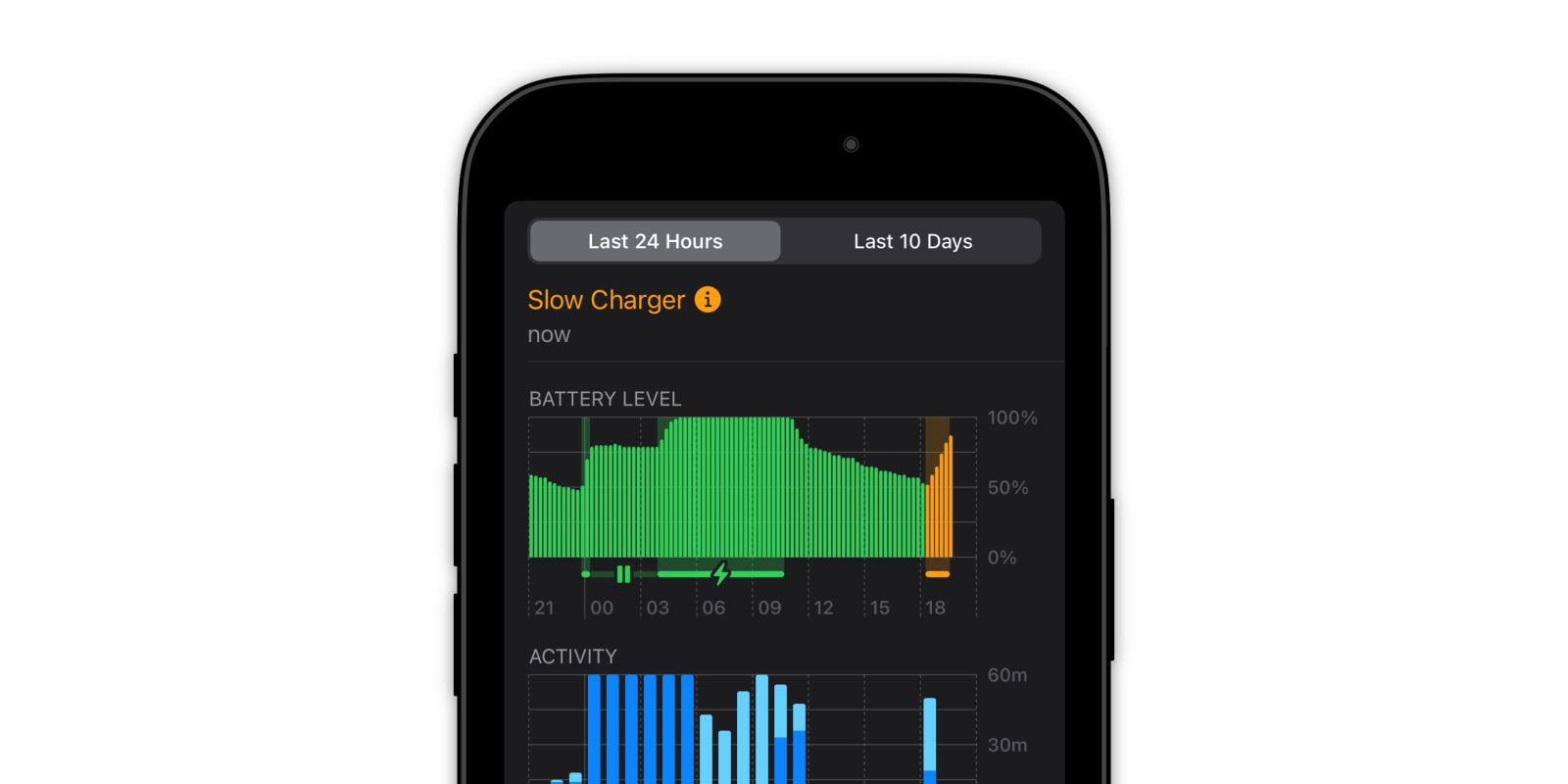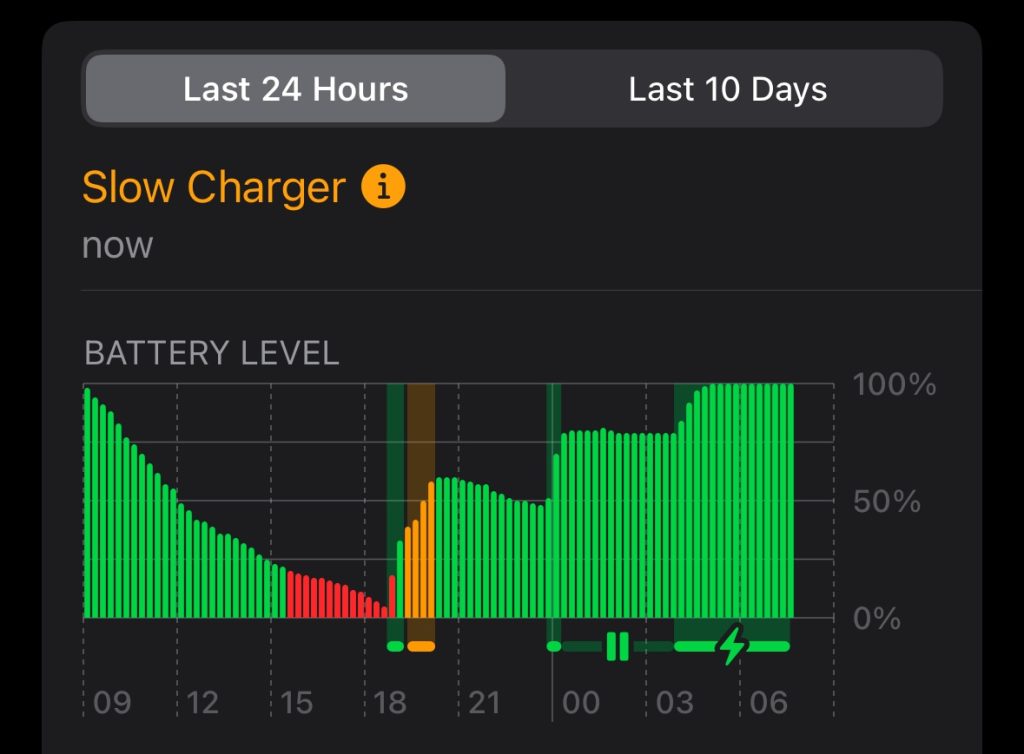 307
307
 Two days ago
Two days ago

If you go to Settings -> Battery on your iPhone, you can see a lot of stats about the performance and health of your battery. This includes a charge graph that plots the battery percentage of the iPhone over the last twenty four hours, so you can track how it charges and how quickly it depletes. The chart is colored differently based on several factors, but what does ‘Slow Charger’ mean?
The Battery Level chart is annotated in various ways depending on the current state of the device at the time.
It is usually marked green when battery is above 20%. It will be marked red when battery percentage falls below 20%. It will be marked yellow if Low Power Mode is enabled. Lines underneath the main bar chart indicate times when the device is charging.

The graph will be marked orange when charging at slower than optimal charging speeds, and a Slow Charger label will appear above the graph.
The Slow Charger state appears when you use a power brick and cable that do not support the faster charging speeds of modern iPhones. Modern iPhones can be charged at up to 30 watts, enabling fast charging from zero to 50% charge in about 30 minutes. A full zero-to-full charge can take under two hours, when using a capable fast charger brick and cable.
The Slow Charger warning appears when a slower charging brick or cable is being used to charge the device. There is no harm to your iPhone by doing this, but simply put, you will be waiting significantly longer for your phone to reach 100%. With a 5-watt charger, it can take an iPhone 16 up to 4 hours to reach full charge.
If you are actively using the phone doing an intensive task, like recording 4K ProRes video, it is also possible for the phone to discharge faster than a slow charger can top it up. This means your battery slowly depletes, even if it is plugged in.
To stop your iPhone being in the Slow Charger state, simply use a USB-C cable (or Lightning cable for iPhone 14 and earlier) and appropriate power brick. You can use the Apple 35 watt dual-port power brick for instance.
However, you do not have to use Apple-branded accessories. Fastest charging speeds can also be achieved by any third-party charger, that can output at least 25 watts. That includes something like the inexpensive Anker Nano charger, which maxes out at 30 watts.
You can even safely use chargers that rated more than 30 watts, like the USB-C power brick that came with your MacBook. Even if you connected to the 140 watt power brick that comes with the 16-inch MacBook Pro, the iPhone will simply charge at the fastest possible speed it supports.
You can confirm that you are charging at faster wattage speeds by leaving the phone plugged in for a little while and then checking the Battery Level chart. If everything is correct, the charging time zone will be colored green.
Source: 9to5mac